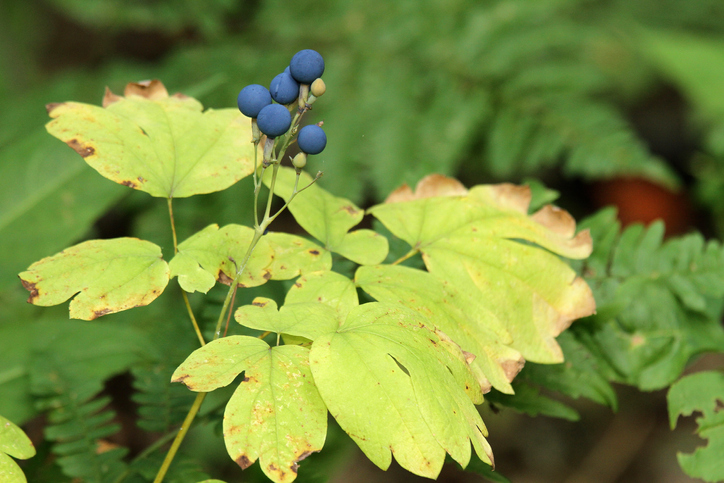Blue Cohosh - Caulophyllum Thalictroides
Blue Cohosh is a perfect example of an herb that should be used with knowledge and experience. This is not an herb to read about on someone’s blog and decide to take it. Rather, if you feel like it could be helpful, you are advised to seek guidance from an experienced herbalist, midwife, or other knowledgeable healthcare professional.
All therapeutic agents can be placed on a continuum from very safe to potentially toxic. Some herbs are more nutritive and nourishing. These have a wide therapeutic index and can be taken safely in larger amounts. They support the body through nutrition and work to normalize physical and mental systems over time. Wild Oats, Stinging Nettle and Mullein are a few examples.
Other herbs, like Blue Cohosh, have a much narrower therapeutic index. That means that it has a stronger action, with potentially dramatic effects. A very useful, yet potent botanical, Blue Cohosh should only be used as part of a formula and under the supervision of a qualified herbalist or other knowledgeable healthcare practitioner.
That said, this is a fabulous herb! Let’s get on with its exploration.
About Blue Cohosh
Family - Berberidaceae
A native of North America, Blue Cohosh is also called Blueberry Root, Blue Ginseng, Yellow Ginseng, Papoose Root and Squaw Root. It grows wild in the eastern regions of the United States and Canada, and can be found north, from New Brunswick and Maine, south to Tennessee and Arkansas and west into the hardwood forests of the Midwest. Here is a great botanical profile for identification by “The Friends of the Wildflower Garden, Inc.”
Part Used and Preparations
The root is collected in the fall when the leaves begin to die back. It can then be sliced or grated, then dried for use as an infusion (tea). The fresh root can be made into a tincture using 1 part plant material to 2 parts 70% alcohol.
A tincture can also be made with the dry root, using 1-part dry root to 5 parts 50% alcohol.
Powdered herb in capsules are not recommended for use and have been tied to some rather strong side-effects. (See contra-indications below.)
Medicinal Actions of Blue Cohosh
Antispasmodic, diuretic, diaphoretic, anthelmintic, anti-rheumatic, mild sedative, emmenagogue, oxytocic, parturient (helps with childbirth), and analgesic.
Energetics – Blue Cohosh is bitter and somewhat pungent. It is sweet, warm, dry, stimulating, restoring, relaxing, and decongesting.
Chemical Constituents
The roots contain the alkaloid methlyl cytisin, thought to be antispasmodic, and the Saponins, caulosapnin and caulophyllosapin, which are thought to increase tone. The alkaloids quinolizine and spartein, and n-methyeystine are responsible for many of its oxytocic properties. Blue Cohosh also contains several alkaloids known to have toxic effects on the cardiac muscle.
Medicinal Uses
Blue Cohosh is best known as a women’s herb. Indigenous peoples of Northeastern North America used it to encourage menstruation and encourage childbirth. Today, midwives use the herb to aid stalled labor (in childbirth), and to treat a variety of genealogical complaints.
Blue Cohosh in Pregnancy and Childbirth
The root of this herb has a long history of helping women through the birthing process, but it isn’t without controversy. The best documented use, by the Native Americans, is to stimulate and support the uterus when labor has stalled.

Sometimes during long labors, contractions become feeble, inefficient, or even stop completely. On the other end of the spectrum, they sometimes become extremely severe and spasmodic.
Blue Cohosh’s oxytocic action may help induce regular, effective contractions. It is often combined with Black Cohosh root (Actaea racemose) and/or other herbs to help stimulate labor and ripen the cervix to facilitate childbirth. The suggested dose is approximately ½ teaspoon of the decoction every ½ hour, or 3-8 drops of the tincture every 1 ½ hours.
Mother’s Cordial
Another traditional use for Blue Cohosh is as is an ingredient in a formula called “Mother’s Cordial.” Combined with Michella repens (Partridge Berry), Rubus idaeus (Red Raspberry leaves), Actaea racemose (Black Cohosh), and Chamaelirium luteum (False Unicorn Root), Mother’s cordial is used in the last few weeks of pregnancy as a partus perpetrator (to prepare the body for labor and childbirth). The formula is said to make labor and delivery easier by promoting normal healthy uterine muscles and to promote effective contractions.
The Blue Cohosh Controversy
The use of this herb in pregnancy and delivery has been associated with a range side effects on unborn and newborn babies. Modern data shows a relationship between the use of Blue Cohosh prior to birth, including during delivery, and children born with a variety of adverse outcomes including:
- Fetal tachycardia – increased heart rate
- Profound congestive heart failure
- Newborn myocardial infraction – heart attacks
- Cerebral Ischemic episodes – insufficient blood flow to the brain and strokes
- Increased meconium.
Midwives and mothers choosing to augment labor with Blue Cohosh would be advised to use fetal heart monitors during labor and delivery. If distress or deviations are observed in the fetal heart tones, the herb should be discontinued.
Most professional herbalists and midwives have stubbornly held opinions about this herb and its use. Some say it’s best to use Blue Cohosh to prepare for birth when the uterus is weak from multiple births or lack of tone. Some say they have used it for years and have never had a problem. Others say the risk isn’t worth it when other herbs could be used that are much safer for the unborn child. Nevertheless, its use is widespread during pregnancy among midwives and pregnant women.
Post Natal use of Blue Cohosh
After the child is born, Blue Cohosh is safe and well-used in small doses to expel the placenta, reduce afterbirth pains, manage bleeding, and to help reduce the uterus to it’s normal, prebirth size.
Blue Cohosh and Women’s Reproductive System
An effective uterine tonic, Blue Cohosh can be useful, in formulas to improve uterine tone and is especially indicated in cases of prolapse and/or when the uterine tissue is overly relaxed accompanied by a deep aching sensation in the legs and pelvis. It is useful for decreasing menstrual cramps, uterine spasm, and abdominal pain in general. (Especially at the onset on the menstrual cycle.)
Blue Cohosh may be helpful where there has been chronic pelvic inflammation and a dragging sensation in the pelvic area. Thus, Blue Cohosh can be a part of an effective treatment for endometriosis, uterine and ovarian cysts, and fibroids. As an emmenagogue, it is used to treat amenorrhea (lack of menstruation) and Dysmenorrhea (painful menstruation). It is thought to be most useful when these issues are due to cold and pelvic congestion. Other indications for use include hysteria and breast pain.
Abdominal Congestion
As an anti-inflammatory and antispasmodic, it helps decrease general abdominal discomfort and congestion. Dr. King, a 19th century eclectic physician, describes Blue Cohosh’s use for cramping and congestion of the digestive organs including flatulence, cramps, cramping after eating, IBS and spasmodic colic.
He goes on to talk about Blue Cohosh’s beneficial influence on abnormal conditions of the mucus membranes, stating that it may be a useful treatment for stomatitis and mouth sores.
Other Medicinal uses for Blue Cohosh
Blue Cohosh can be used in small amounts as a mild sedative in cases of anxiety and restlessness. It has been used with some success when there is joint pain in the small joints of the fingers and toes, with otherwise no disfigurement. In this case, mix Blue Cohosh with True Solomon’s seal (or another mucilaginous herb to protect digestive mucosa), and ginger or turmeric root.
Contra-indications
- Large doses can cause nausea, sore throat, hyperventilation, headache, and elevated blood pressure.
- Contra-indicated in pregnancy, especially in the first 38 weeks as it is considered a teratogen and may cause birth defects.
- It Increases blood circulation to the pelvis and should be used cautiously during heavy menstruation.
- A 2008 safety review claims, “There are three case reports in the scientific literature that blue cohosh taken at the time of delivery may have caused: 1) perinatal stroke, 2) acute myocardial infarction, profound congestive heart failure and shock in the baby, and 3) severe multi-organ hypoxic injury.”
- Blue Cohosh is an estrogenic herb, caution should be taken by those with estrogen excess or estrogen sensitive conditions and cancers.
Further Reading
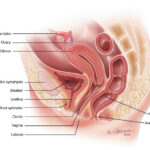
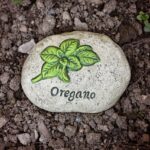


Healing the causes of suffering – A four-step model for healing
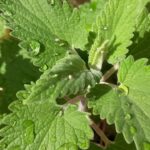
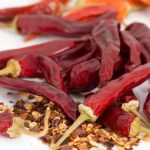
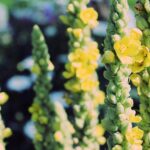

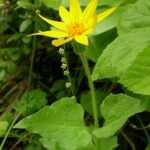


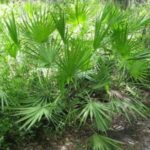



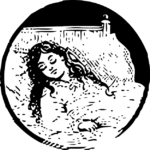






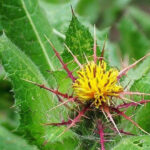


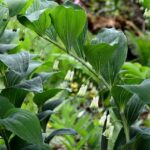
Suggested Products
References
http://www.herbaleducation.net/herbs-glance
https://theherbalacademy.com/the-herb-safety-continuum-scale/
https://www.nativewildflowers.net/blue-cohosh-plants/
https://www.wildflower.org/plants/result.php?id_plant=cath2
https://www.friendsofthewildflowergarden.org/pages/plants/bluecohosh.html
http://wildhealingherbs.com/wp-content/uploads/2020/06/BlueCohosh_BotanoLogosMonograph_FINAL.pdf
Bergner, Paul; Women’s Herbs from the 4 directions; Southwest Center on Botanical Medicine 2001
Stansbury, Jill ND; Hormone Replacement Therapy – Botanical and Pharmaceutical Options: Southwest Center on Botanical Medicine Conference, 2003
Randine, Lewis PHD; Using Herbal Remedies to Promote Vibrant Reproductive Health; Medicines of the Earth, herbal conference, 2005
Lloyd and Lloyd; Drugs and Medicines of North America; 1884-1887
Room, Aviva MD: Botanical Medicine for Women’s Health, Second Edition: Elsevier Publisher, St Luis, Mo. 2018
Holms, Peter; the Energetics of Western Herbs, Volume 1; Snow Lotus Press, Cotati, Ca. 2007




Healing the causes of suffering – A four-step model for healing





















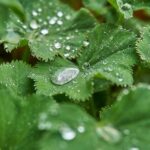

Disclaimer
The statements and ideas presented here are not intended to diagnose, treat, cure, or prevent any disease or condition. They have not been evaluated by the FDA. All ideas presented are for the sole purpose of education. To help you take control of your own health. If you have a health concern or condition, consult a physician. We suggest that you always consult a medical doctor before modifying your diet, using any new product, drug, supplement, or doing any new exercises.
These statements and products have not been evaluated by the FDA. They are not intended to diagnose, treat, cure, or prevent any disease or condition. If you have a health concern or condition, consult a physician. Always consult a medical doctor before modifying your diet, using any new product, drug, supplement, or doing any new exercises.
Herbs taken for health purposes should be treated with the same care as medicine. Herbal remedies are no substitute for a healthy diet and lifestyle. If you are serious about good health, you’ll want to combine diet, exercise, herbals, a good relationship with your doctor and a generally healthy lifestyle. No one of these will do it alone.
This information is designed to be used as part of a complete health plan. No products are intended to replace your doctor’s care, or to supersede any of his/her advice or prescriptions.

